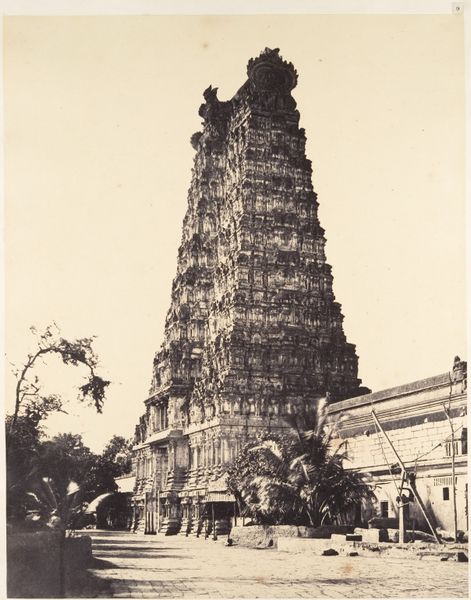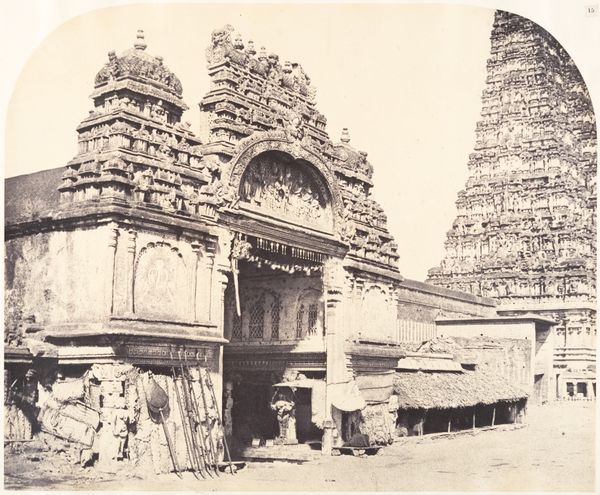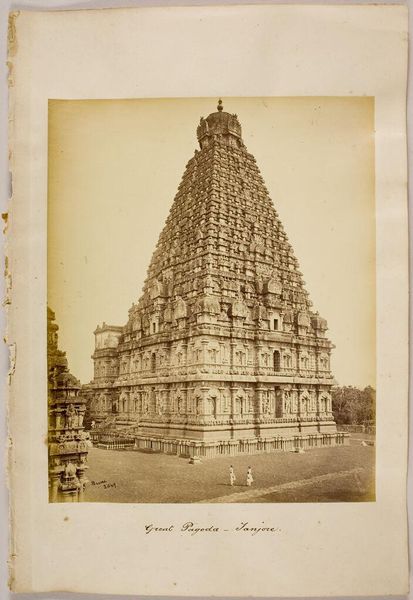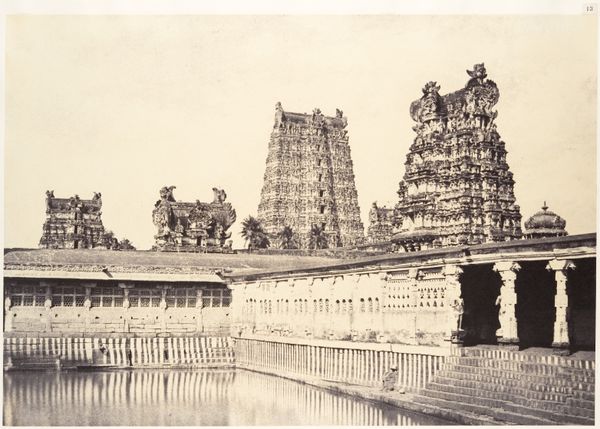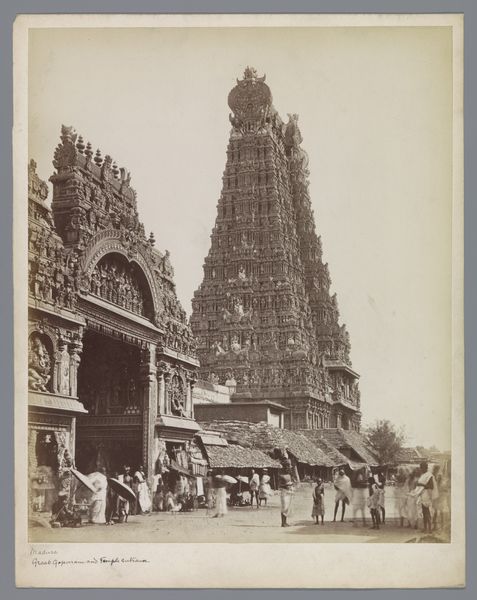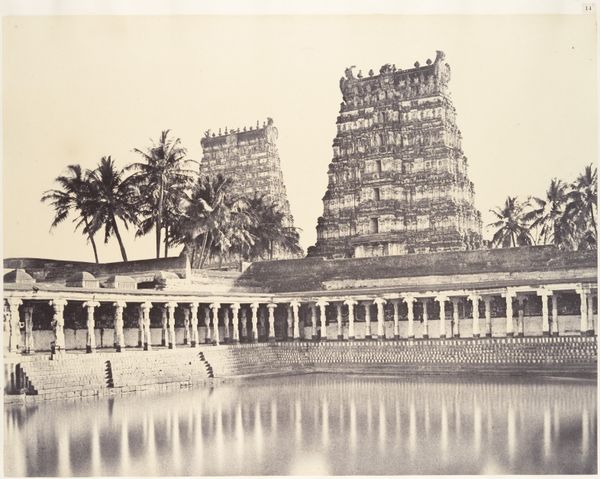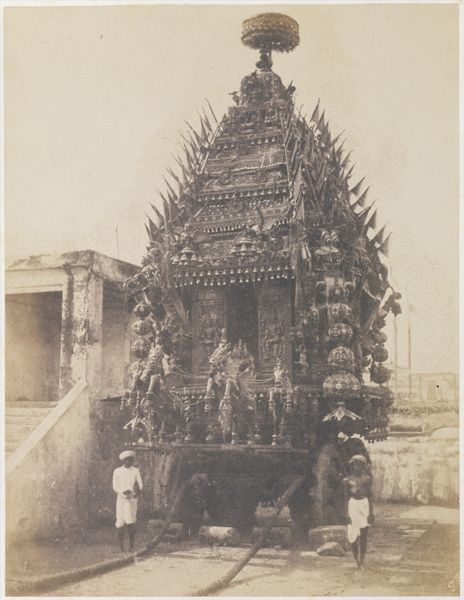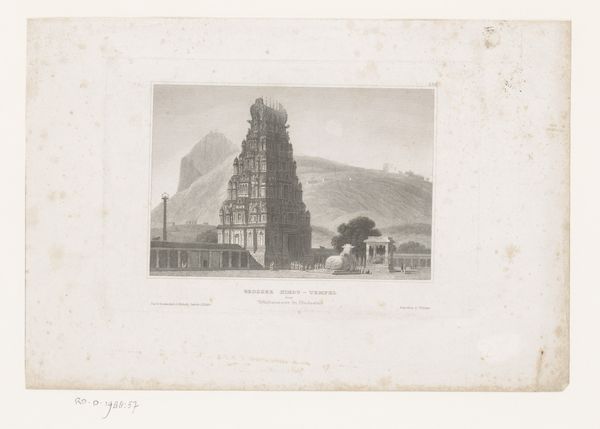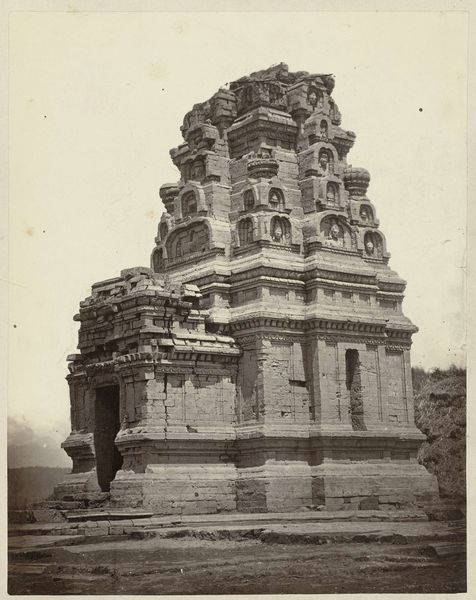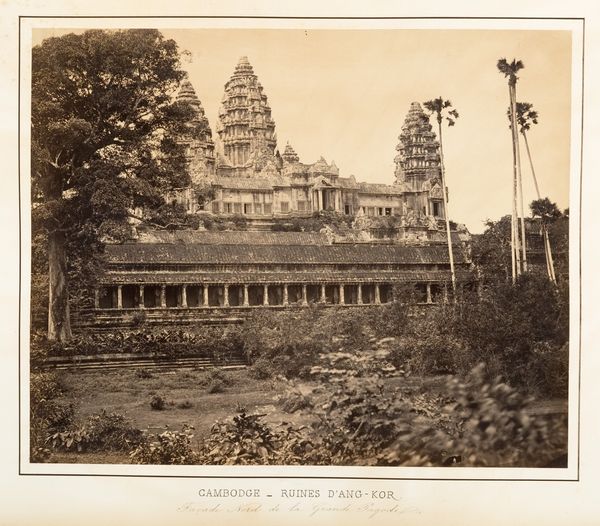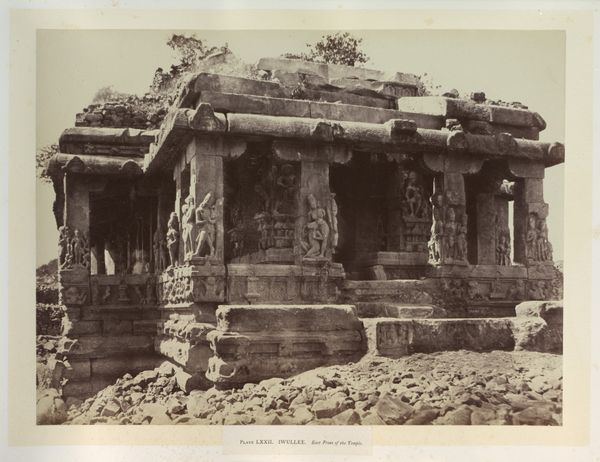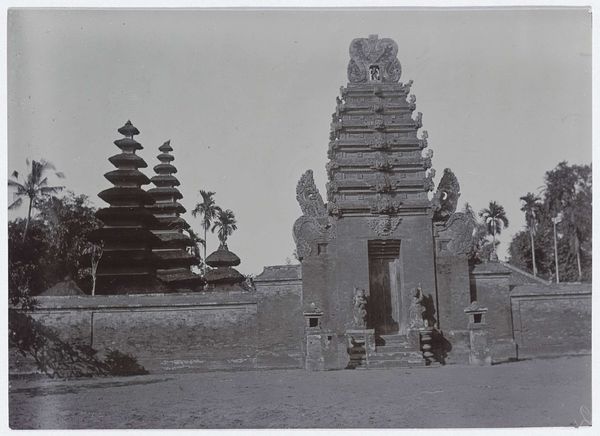
daguerreotype, photography, architecture
#
landscape
#
daguerreotype
#
outdoor photography
#
photography
#
ancient-mediterranean
#
orientalism
#
architecture
Dimensions: Image: 33.6 x 30.1 cm (13 1/4 x 11 7/8 in.) Mount: 57 x 45 cm (22 7/16 x 17 11/16 in.)
Copyright: Public Domain
Curator: Gazing at Linnaeus Tripe's daguerreotype, "The Great Pagoda," from 1858, currently housed here at The Met, I’m struck by how this single image seems to hold centuries, perhaps even millennia. Editor: My first thought? Scale. It’s utterly imposing. That pagoda just seems to reach into forever, but the almost monochromatic palette softens the mood into something contemplative. It feels ancient, and silent. Curator: Tripe’s composition masterfully utilizes the technical precision of early photography. See how the pagoda's complex ornamentation, achieved in detailed relief, presents a complex facade, a screen, layered between this world and something...other. Editor: Right, and the almost geometric progression as it ascends mimics a kind of… well, an ambition, a reach. It's more than just stone; it's visual architecture, telling stories in its ascending forms and carved surfaces. You can spend forever examining all the textures! Curator: The placement within the orientalist aesthetic provides a contextual frame for how we see it today. But beyond cultural placement, I read the picture’s inherent dialectic: A dance between ephemeral sunlight and enduring materiality. The very air feels heavy and significant. The lone tree at the base seems caught, in visual argument, to be natural element against such an obvious monument to man. Editor: Yes, that relationship adds a certain dynamic tension, but the technical virtuosity is breathtaking, too. A daguerreotype of this size, capturing such detail? It almost feels impossible. We need to remember that early photography was alchemy— equal parts artistry and unpredictable experiment. The man dedicated himself to understanding every facet of the negative to yield results so perfect that even after 2 centuries they offer perfect clarity and tones. Curator: Exactly, this is what resonates with me! Its existence in material form underscores its own temporality. What do you leave behind after you are gone? Is the question the pagoda answers. Editor: I hadn't thought of it that way. Thank you for inviting me to engage.
Comments
No comments
Be the first to comment and join the conversation on the ultimate creative platform.
